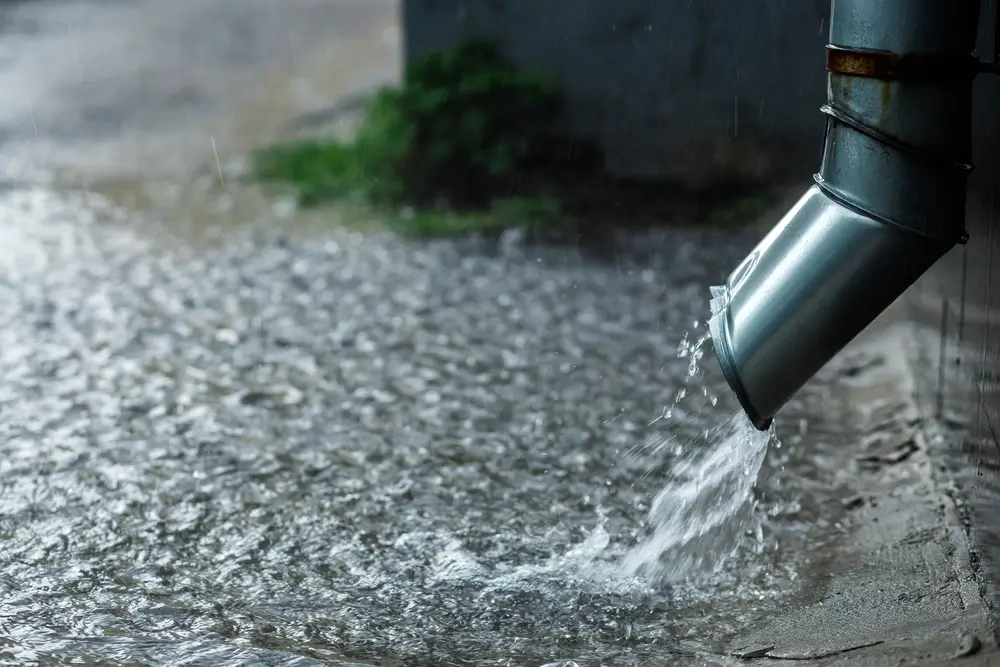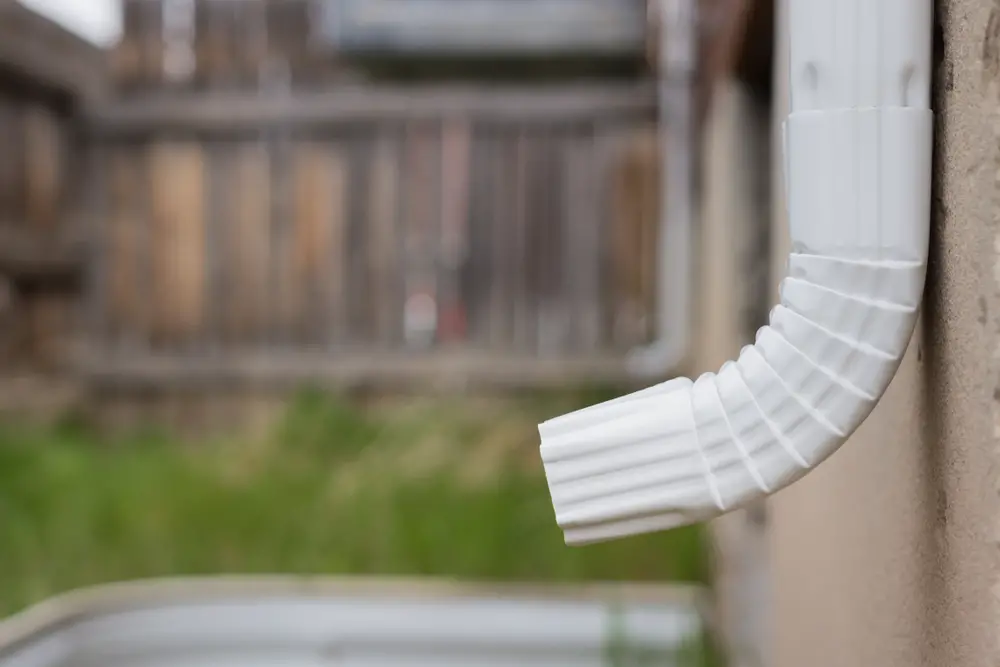Burying your downspout is a quick and easy way to control the active run-off collected from the precipitation that falls or melts from your house. A buried downspout helps mitigate water pooling and collecting against your basement, reduces soil displacement, keeps the downspouts from suffering impact damage, and gives your property a more finished look. However, there are many misconceptions about this process. But just what are the five most common myths about burying your downspout?
The five most common myths about burying your downspout are that it will cause soil erosion, that buried downspouts are more susceptible to pests, that they may freeze or clog, that underground drains are susceptible to debris, and that buried downspouts are just too expensive.
In this content you’ll learn:
What Are Eaves, And How Do They Function?
Eaves, or eaves troughs, are simply the rain gutters that run along the terminating edge of the roofline of your house. They are u-shaped metal troughs that collect at the four corners of a house. They are gravity-drained down the house side by enclosed pieces of square, tin piping. This squared piping is most commonly known as a downspout.
What Is A Downspout?

A downspout is one of the four metal pipes that runs off your house’s eaves trough. It acts as a conduit for the water, snow melt, and debris collected there. Most modern homes have at least four.
What Does It Mean To Bury Your Downspout?
At the terminus of the downspout, there are often flimsy metal extensions. These can be folded up to be temporarily placed out of the way (to allow access, to facilitate ease when mowing the lawn, etc.). Burying the downspout means you disconnect these extensions and re-direct the water flow directly into a flexible plastic pipe running directly inside the gravel channel below the surface of your property.
Five Common Myths About Burying Your Downspout
These are five common myths about burying your downspout. Let’s start with downspouts supposedly causing soil erosion.
Buried Downspouts Cause Soil Erosion
There is an abundance of online info that makes this claim. The exact opposite is true, though. When you bury your downspout, you take the water that the runoff would direct across your property’s surface and transport it safely to an exit point nearer the curbside. This allows the water to drain off into the curbside swale, and eventually the city sewage system.
This fluid diversion saves wear on your sod surface (grass). This includes any chemical treatments you may apply. It also spares any particulate areas you have established (mulch beds, gravel dog runs, etc.). Sitting water on ANY landscape surface, recent or established, is never good.
Downspouts Directed Under The Surface Area Are Susceptible To Pests
This is unlikely. Burying your downspout, in essence, “closes the system.” In the usual application, the metal downspout pipe is cut back and directed into a flexible plastic sleeve. The flexible plastic piping leads directly to a gravel channel buried under your property. The plastic piping (either porous or non-porous) travels DIRECTLY inside the gravel channel. The channel will have been soaked and compacted prior to being buried. The compacted gravel is akin to concrete, therefore, much harder to penetrate than even compacted or existing soils.
Underground Drainage May Freeze
The gravel channel installed to cart away the water load is liable to the normal freeze/thaw cycle. So are the plastic inserts that direct the downspouts into the channel and the buried channel piping. To prevent any drainage issues, the downspout connections are simply disconnected. The melt waters are allowed to gravity drain until the temperatures rise and the ground thaw is complete.
Eaves That Run Out Into Underground Drainage Cart Debris
The debris that collects and may be washed down the spouts (leaves, insects, etc.) does very little to affect the flow of the water. If this still remains a concern, you can purchase flex pipe connectors that have slotted grate filters that trap debris and particulates. If you suspect your downspout is clogged (e.g. by viewing excessive pooling at the insert point), disconnect the plastic attachment and clear the debris away.
Burying Downspouts Is Too Expensive
Proper landscape installations are a wise investment. The typical, metal run-off pipes that lay flat against the sod surface (your lawn) look unfinished and present as the tripping/impact hazard that they are.
The standard cost of burying four main downspouts is around $750 if a contractor installs them at the time of landscape construction. This price jumps to $1,500-$2,000 if installed at a later date. This may seem punitive, but it pales in comparison to other costs. These include basement water damage ($5,000-$20,000), or ground soil erosion ($3,000-$15,000) that is so common from unguided eaves runoff.
Please note that all costs are estimates based on recent surveys. The final cost of any repair is dependent on the contractor you select, the extent of the water damage/soil erosion, and the location and season of your property.
Why It’s Important To Ignore The Myths And Prioritize Burying Your Downspout
Water damage, be it to the concrete foundation of your house, or as soil/particulate loss is costly and unsightly. Buried downspouts mitigate such a high portion of this unnecessary risk. The fractional expense (a small part of the overall cost of a landscape installation) incurred by choosing to bury your downspouts just makes good sense. It removes an eyesore, makes the sod surface safer, and prevents costly future damage.
As it is usually the last act of physical construction that will take place on a landscape installation, it is the opportune time to do it. The possible prevention of sub-basement water damage and fresh lawn or particulate soil erosion more than make up for the initial expense.
Conclusion: Debunking The Five Most Common Myths About Burying Your Downspout
Bury your downspouts. Any freezing or clogging issues you may encounter are quick and easy fixes, there will be no increase in the likelihood of pest infestation, and the cost of the installation is far lower than the cost of repairs if you opt not to.
So, what do you think about these myths and burying your downspout? Let us know in the comments below!

